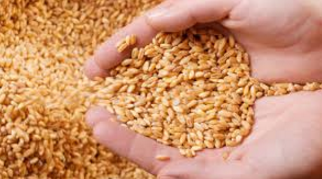Guest blog post by Arpit Saxena, Apprentice Leader at Mu Sigma Inc.
In the stormy June of 1944, D-Day – the date of the Normandy Landings was looming. The allied forces backed up by tanks and military were painstakingly assembled and prepped in the lead-up to the invasion.
The supreme commander of the Allied Forces had to ensure the success of the D-Day, originally scheduled for June 5. Meteorologist predicted June 5 to be disastrous, weather wise. With all the odds against them, the commander found a window of opportunity – Quiet weather, moderate winds, low tide and a more-or-less full moon – June 6 was a go.
“Weather changes history”.
In more recent past, the nasty winter weather throughout large parts of the U.S. in 2014 had been the theme to then economic data. By April, businesses nationwide suffered around $15 billion in weather-related losses. Of course retailers, airlines and logistics firms led the pack.
Weather is the biggest influence on consumer behavior after the state of the economy, according to the British Retail Consortium. Weather conditions influence human behavior, it sets an individual’s emotional tone and the choices they make. The sales performance of just about every consumer good can be impacted by a particular type of weather condition. Weather influences the type of clothes we wear, the type of food we eat, the car we buy/rent and the type of holiday we want to book.
It determines how much we are willing to spend on these goods. ‘The Journal of Retailing and Consumer Services’ shows that on a sunny day consumers were willing to pay an average of $4.61 for a green tea compared with $3.35 in overcast conditions. However, it’s not just sunlight that impacts purchase behavior. Temperature, rainfall, snow and wind will all determine what products are more likely to sell.
Supermarkets, such as TESCO, look at the forecast on a daily basis and alter stock requirements and pricing accordingly. They are able to forecast weather-determined consumer demand with unerring accuracy, knowing that for example, a 1 degree rise in temperature can trigger a 22% increase in demand for fizzy drinks, 60% decrease in porridge, and 90% increase in garden furniture.
Weather can add a pinch of salt to your prediction models. The question is how to improve your prediction models using weather and how to thwart yourself from making some very common cardinal sins while building weather dependent models.
Using right modeling techniques, you can identify variables influencing the customer purchasing behavior for a particular product in a particular region. Along with the weather elements, these behavioral models should include other variables that can affect the sales such as day-of-week, time of year, proximity to holidays, promotions and discounts etc.
Few important things to be kept in mind:
Geographic Location – Weather means different things for people living in different habitats and climates. Therefore you should avoid building models by brute force, which would consider the weather and the sales trends in Minneapolis and Miami with no difference. Your model might end-up estimating lower sales of cold beverages in colder regions than the actual and vice-versa if it does not distinguish between regions.
You should identify regions with similar climatic conditions by looking at the weather trends and taking the help of meteorologists
Season – It’s not just the location, but changes in weather conditions also that impact the selling pattern differently in different seasons. Similar to the geography, your model should be able to differentiate the time of the year as different seasons.
You should not restrict to the 4 major seasons, but classify the complete year based on weather conditions pertaining in different geographies across the year.
Interactions of weather variable – Sales of different products are governed by different variables and many a times by a mix of weather variables. You should not rely on a model which cannot account for the interactions between these variables. Let’s try to understand this with the Umbrella Example. Umbrellas are most likely sold during heavy precipitation or on a hot sunny day to save against the rain or the sun respectively. In case the model fails to understand the interaction, you might try predicting sales of umbrella on hot sunny day with high precipitation. This doesn’t work.
The model should be intelligent enough to identify the mix of weather conditions influencing the sales of a product.
Weather Forecast – Another key point is that the weather conditions influencing customer purchasing behavior are not just constrained to the current weather conditions but also to the weather forecast. Though one can argue the magnitude of change of weather day by day, it is recommended to include the weather forecast, to capture:
- Abrupt as well as moderate changes in weather and its influence on sales
- Sales trends as a result of consistent weather
Aggregation – Weather is changing all the time, be it within a week, a day or an hour. The primary challenge in using predictive models that contain the weather variables to estimate the future sales is dealing with the granularity of the data at your disposal. In order to bring the weather variables at the same granularity as that of the sales, you might need to either aggregate or interpolate the weather information. These methods can differ for each type of weather variable to ensure that the integrity of weather data is sustained and the aggregated form is a representative of the entire day.
For example maximum temperature better represents day in a hot summer while minimum temperature might be more insightful during winters. You can opt to choose multiple forms of the same variable.
Effects of other events – As mentioned earlier, events like day-of-week, time of year, proximity to holidays, promotions and discounts etc. all impacts selling patterns. Therefore you should also include them as model inputs to ensure that the model does not confuse the high sales in weekend or during a promotion campaign as an impact of weather.
Sources:
- http://www.usatoday.com/story/weather/2014/06/03/d-day-weather-fore…
- http://www.thecitywire.com/node/34962#.VgomJ8uk6Xc
- http://www.kylemurray.com/papers/MDFP_JRCS2010.pdf
- http://www.weatherunlocked.com/resources/how-to-increase-advertisin…
About the Author:
Arpit has six years of work experience in the analytical/decision science space. He has worked with clients across various industries such as Life Sciences, Hi-Technology, Retail and CPG to deliver valuable insights and take actions supported through facts ground in data. Skilled in solving business problems using analytical techniques, working with big data, project management, statistical modeling and delivering actionable results.
Top DSC Resources
- Article: What is Data Science? 24 Fundamental Articles Answering This Question
- Article: Hitchhiker’s Guide to Data Science, Machine Learning, R, Python
- Tutorial: Data Science Cheat Sheet
- Tutorial: How to Become a Data Scientist – On Your Own
- Categories: Data Science – Machine Learning – AI – IoT – Deep Learning
- Tools: Hadoop – DataViZ – Python – R – SQL – Excel
- Techniques: Clustering – Regression – SVM – Neural Nets – Ensembles – Decision Trees
- Links: Cheat Sheets – Books – Events – Webinars – Tutorials – Training – News – Jobs
- Links: Announcements – Salary Surveys – Data Sets – Certification – RSS Feeds – About Us
- Newsletter: Sign-up – Past Editions – Members-Only Section – Content Search – For Bloggers
- DSC on: Ning – Twitter – LinkedIn – Facebook – GooglePlus
Follow us on Twitter: @DataScienceCtrl | @AnalyticBridge


